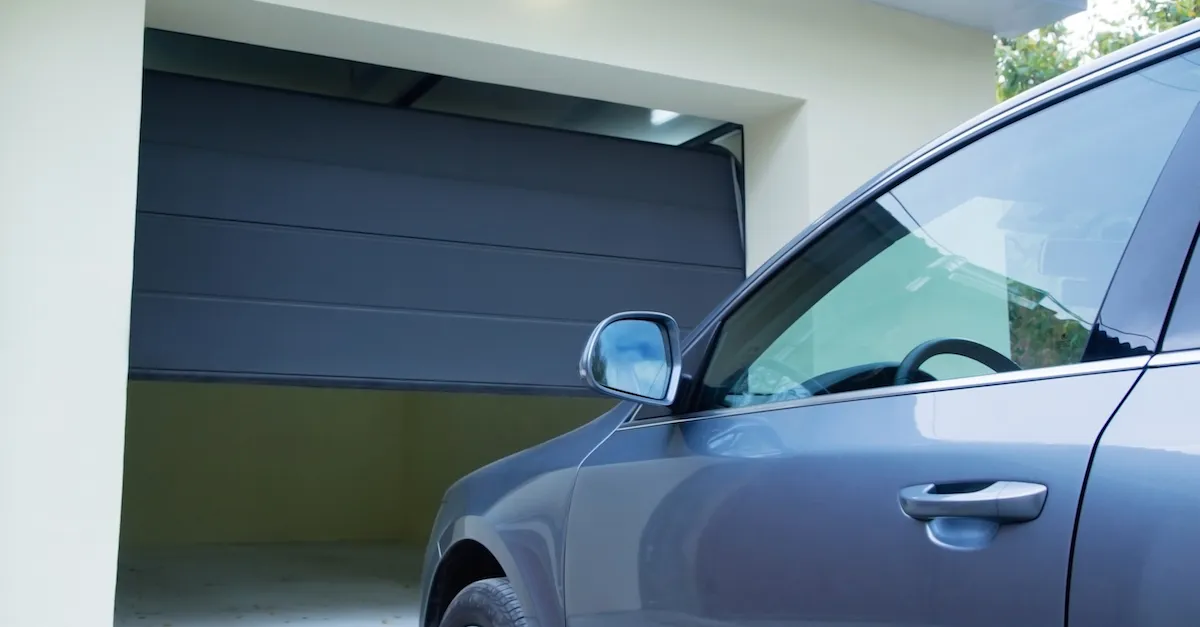Introduction
With the development of technology, smart home devices have become increasingly popular, and garage door remotes are a common example of such devices. However, as smart technology becomes more widespread, security issues also arise. The security of garage door remotes is directly related to the safety of household property, making it crucial to understand how to prevent hacking attacks. This article explores the working principles of garage door remotes, potential security threats, and how technological measures can enhance their ability to prevent hacking attacks.

Working Principles of Garage Door Remotes
Garage door remotes primarily communicate with the garage door receiver through wireless signals to control the door's opening and closing. A typical garage door remote system includes the following main components:
Remote: The handheld device that sends a wireless signal when a button is pressed.
Receiver: Installed on the garage door, this device receives signals from the remote and performs the corresponding action.
Control Unit: Processes the received signal and controls the garage door's movement.
Traditional garage door remotes often use fixed code technology, where the same wireless signal is sent each time the button is pressed. Although simple and easy to use, fixed code technology has serious security vulnerabilities because fixed codes can be easily intercepted and copied.
Potential Security Threats to Garage Door Remotes
The main security threats to garage door remotes include signal interception and replay attacks. Here are some common attack methods:
Signal Interception: Hackers use radio receivers to intercept the wireless signal sent by the remote. Once the signal is obtained, hackers can easily copy and replay it to open the garage door.
Replay Attack: Hackers intercept and save the remote's wireless signal, then replay it when needed to simulate legitimate user operations.
Man-in-the-Middle Attack: Hackers insert themselves into the communication link between the remote and the receiver, intercepting or altering transmitted data to control the garage door.
Signal Jamming: Hackers send interference signals, preventing the remote's signal from reaching the receiver, thus blocking legitimate user operations.
Technological Measures to Enhance Garage Door Remote Security
To prevent the aforementioned attacks, modern garage door remotes employ various security technologies. The following are some common and effective measures:
Rolling Code Technology:
Principle: Also known as hopping code, rolling code technology generates a new, unique code each time the remote button is pressed. These codes are generated using encryption algorithms, and the remote and receiver remain synchronized.
Advantages: Even if a hacker intercepts a signal, replaying it is useless because the receiver will recognize the code as already used.
Implementation: Rolling code technology requires complex encryption algorithms and powerful computing capabilities but has become standard in modern systems.
Encrypted Communication:
Principle: Uses encryption protocols like AES (Advanced Encryption Standard) or DES (Data Encryption Standard) in the communication between the remote and the receiver.
Advantages: Ensures that even if the signal is intercepted, hackers cannot decrypt the signal content.
Implementation: Encryption algorithms require hardware support and increase cost and complexity.
Frequency Hopping Spread Spectrum (FHSS):
Principle: FHSS technology rapidly switches the transmission signal among multiple frequencies, reducing the risk of signal interception.
Advantages: Makes it difficult for hackers to capture the complete communication signal, effectively preventing signal interception and interference.
Implementation: Requires advanced wireless communication technology and device support.
Two-Way Authentication:
Principle: Establishes mutual authentication between the remote and the receiver to ensure both devices are legitimate.
Advantages: Prevents man-in-the-middle attacks, ensuring secure communication.
Implementation: Requires bidirectional communication modules and complex authentication algorithms.
Case Studies
To better understand the practical application of these technological measures, here are some specific case studies:
Application of Rolling Code Technology:
Case: Most modern brands of garage door remotes, such as LiftMaster and Chamberlain, use rolling code technology. These devices use dynamic encryption algorithms, like Keeloq, ensuring that each operation generates a unique code.
Effectiveness: Significantly reduces the risk of replay attacks, enhancing security.
Application of Encrypted Communication:
Case: Some high-end garage door control systems use AES-128 encryption to ensure the security of wireless signal transmission.
Effectiveness: Even if the signal is intercepted, hackers cannot decrypt the signal content, protecting user security.
Application of Frequency Hopping Technology:
Case: Some industrial-grade garage door control systems use FHSS technology to switch signals among multiple frequencies.
Effectiveness: Effectively prevents signal interception and interference, improving system anti-jamming capability and security.
Application of Two-Way Authentication:
Case: Some advanced smart home systems, such as the Nuki Smart Lock, use two-way authentication technology to ensure secure communication between the remote and the receiver.
Effectiveness: Prevents man-in-the-middle attacks and unauthorized device access.
Implementation Challenges and Solutions
While the aforementioned technological measures are effective in enhancing garage door remote security, they also pose some challenges in implementation. Here are these challenges and corresponding solutions:
Increased Costs:
Challenge: Using advanced encryption algorithms and bidirectional communication modules increases production costs, affecting market competitiveness.
Solution: Reduce unit costs through scale production and technological optimization; provide products with different security levels based on user needs to meet different market demands.
Power Consumption Issues:
Challenge: Encryption and frequency hopping technologies require more computing resources and energy, potentially shortening remote battery life.
Solution: Use low-power chips and optimized algorithms to balance security and power consumption; offer rechargeable batteries or long-life battery options.
Compatibility Issues:
Challenge: New technologies may be incompatible with old systems, affecting user experience.
Solution: Consider backward compatibility when designing new systems; provide upgrade kits or transition solutions to help users smoothly transition to new systems.
Future Development Trends
With continuous technological advancement, the security of garage door remotes will further improve. Here are some potential future trends:
Blockchain-Based Authentication Systems: Use blockchain technology to establish decentralized authentication systems, ensuring the security and traceability of each operation.
Biometric Technology: Introduce biometric technologies like fingerprint and facial recognition to further enhance garage door security.
Artificial Intelligence and Machine Learning: Use AI and machine learning technologies to monitor and analyze garage door operation behaviors in real-time, identifying potential security threats.
Conclusion
The security of garage door remotes is directly related to the safety of household property and personnel. By adopting technologies like rolling code, encrypted communication, frequency hopping, and two-way authentication, the ability of garage door remotes to prevent hacking attacks can be significantly enhanced. However, practical implementation still faces challenges such as increased costs, power consumption, and compatibility issues. With continuous technological development, the security of garage door remotes will further improve, providing users with more reliable security guarantees. In the future, we can expect the application of more innovative technologies to make smart home devices safer and more intelligent.

-
Office ViewQinuo Electronics Co., Ltd.was founded in 2009,it is a high-tech company that integrated R & D, manufacturing, sales and service for 15 years,which is mainly specialized in providing sensors of automatic door, control system of door and gate, car key remote, auto parts etc. The company currently has four independent brands: U-CONTROL, U-SENSORS, U-AUTOGATES and U-AUTOKEYS.
-
got questions? call us
+86 13960286508
-
fax :
+86 595 22901208 -
Email :
[email protected]
-
address
- No.991 Xingxiu Road,Taiwanese Investment Zone, Quanzhou, Fujian Province,P.R.China











